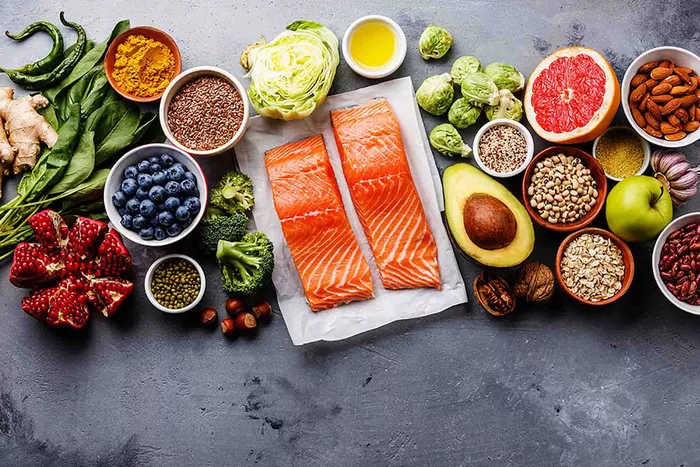The concept of “healthy food” is as old as civilization itself, with various cultures throughout history attributing health and vitality to specific diets and food practices. In contemporary times, the discourse around healthy food has become more nuanced, focusing on the intricate balance of nutrients, the impact of food on overall well-being, and the sustainability of food systems. This essay aims to dissect the multifaceted nature of what makes food healthy, exploring the scientific, nutritional, psychological, and environmental dimensions that contribute to the healthiness of our diets.
Macronutrients: The Energy Providers
Macronutrients are the substances required in large amounts to sustain life. They include carbohydrates, proteins, and fats.
Carbohydrates: The Body’s Preferred Energy Source
Carbohydrates are the body’s primary fuel, providing the energy needed for daily activities. They are found in a variety of foods, from simple sugars in fruits to complex carbohydrates in whole grains. The healthiness of carbohydrates lies in their complexity and fiber content, with whole grains and legumes being preferred for their slow-release energy and satiety.
Proteins: Builders of Body Tissue
Proteins are essential for growth and repair of tissues. They are made up of amino acids, some of which must be obtained through diet. Animal proteins are complete, containing all essential amino acids, while plant proteins can be combined to achieve a complete profile. The healthiness of protein sources is influenced by factors such as sustainability and the presence of unhealthy fats.
Fats: The Misunderstood Nutrient
Fats have been vilified in the past, but they are necessary for nutrient absorption, hormone production, and insulation of the body. The key is to differentiate between healthy fats, such as those found in avocados and olive oil, and unhealthy fats, like trans fats and excessive saturated fats.
The Nutritional Foundation
At the core of what makes food healthy is its nutritional content. Healthy food is rich in essential nutrients that the body requires for proper functioning.
Macronutrients: Macronutrients—proteins, carbohydrates, and fats—are the primary sources of energy and are vital for growth, maintenance, and repair of body tissues.
Proteins are the building blocks of life, essential for the structure, function, and regulation of the body’s tissues and organs.
Carbohydrates provide the body’s preferred energy source, with complex carbs being particularly beneficial due to their fiber content and slow release of energy.
Fats are necessary for the absorption of fat-soluble vitamins and for the production of hormones. Unsaturated fats, especially omega-3 fatty acids, are crucial for brain health and reducing inflammation.
Micronutrients
Micronutrients, including vitamins and minerals, are required in smaller quantities but are just as important for maintaining health.
Vitamins: Vitamins like A, C, D, E, and K, as well as B-complex vitamins, play various roles in the body, from immune function to energy metabolism.
Minerals: Minerals such as calcium, iron, magnesium, and potassium contribute to bone health, red blood cell production, nerve function, and muscle contraction, respectively.
Dietary Fiber: Dietary fiber, found in plant-based foods, aids in digestion, helps maintain healthy blood sugar levels, and contributes to heart health by lowering LDL cholesterol.
Phytochemicals and Antioxidants
Beyond traditional nutrients, phytochemicals and antioxidants in healthy food provide additional health benefits.
Phytochemicals: These are compounds found in plants that have protective or disease-preventive properties. Examples include carotenoids, flavonoids, and phytosterols, which have been linked to reduced risks of chronic diseases.
Antioxidants: Antioxidants neutralize free radicals, which can cause cellular damage leading to chronic diseases and aging. Foods rich in antioxidants include berries, dark chocolate, and green tea.
The Impact of Processing and Preparation
The way food is processed and prepared can significantly affect its healthiness.
Minimal Processing: Minimally processed foods retain more of their natural nutrients and are less likely to contain added sugars, unhealthy fats, and artificial additives.
Healthy Cooking Methods: Cooking methods like steaming, baking, and grilling are generally healthier than frying or deep-frying, which can add excess fat and calories.
Cultural and Social Dimensions
Food is not only about nutrition; it is also a cultural and social experience.
Cultural Diversity: A diverse diet that includes a variety of foods from different cultures can provide a broader range of nutrients and enhance the enjoyment of eating.
Social Connections: Sharing meals with others fosters social connections and can contribute to a sense of belonging and well-being.
The Role of Personalization: Understanding individual nutritional needs and preferences is crucial for defining what is healthy for each person.
Genetic Factors: Genetic variations can influence how individuals metabolize certain foods, affecting their health outcomes.
Lifestyle and Activity Levels: Physical activity and lifestyle considerations should inform dietary choices to ensure that energy intake matches energy expenditure.
Conclusion
Healthy food is a complex tapestry woven from the threads of nutrition, psychology, environment, and culture. It is not a one-size-fits-all concept but a personalized journey that considers individual needs, preferences, and values. As we continue to explore the essence of healthy food, it is clear that it is not just about the absence of disease but the presence of vitality, sustainability, and joy.
Related Topics:

























